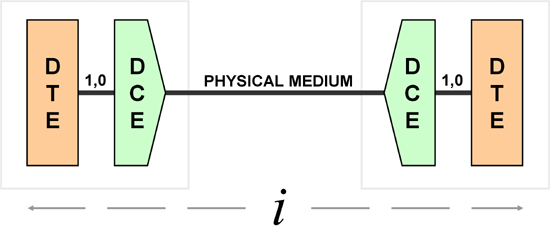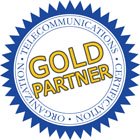- Copper, glass, air, ...
- Represents 1s, 0s on physical medium
- End devices
- Code information into 1s and 0s
Data communications as we know it today started with the publication of a set of papers by Claude Shannon in the Bell System Technical Journal in July and October 1948, entitled "A Mathematical Theory of Communication". This was the beginning of what is known today as information theory.
The core premise of information theory is the desire to communicate information across a physical medium. To do this, the information is coded in binary digits or binits. The physical medium, being real, has a maximum capacity, a maximum rate at which information can be transmitted across it. The code rate, i.e. the number of binary digits required to represent the information can never be less than the information content of the signal measured in bits. Note that this was the original definition of the word "bit", a measure of information content in a signal. This original meaning has been lost in the mists of time, and "bit" is now used to mean logic level. The information transfer rate in bits/second can never be faster than the channel capacity. The capacity is directly related to the signal-to-noise ratio.

In our training, we explore the practical aspects of data communications, and leave the study of information theory as a homework assignment for the interested reader. To start our journey through the world of data communications and networking, we establish a model for discussing data circuits and communications, then look at some examples to put the model in context and preview what we cover in subsequent lessons, including communication equipment, point-to-point, multidrop and multipoint circuits, LANs, and the ultimate goal, Wide Area Networking.
A model or paradigm widely used to discuss some of the more fundamental ideas of data communications comes from an organization which used to be known as the CCITT (le Comité Consultatif International de Téléphone et de Télégraphe), or in English, the International Consultative Committee on Telephone and Telegraph.
Some participants claimed it stood for "Coffee and Croissants Interspersed with Technical Trivia" or in French, "du Café et des Croissants Intercalés avec des Trivialités Techniques".
The name was changed to the Telecommunications Standards Sector of the International Telecommunications Union, and is abbreviated ITU-T, or simply ITU… though some still refer to them as "the CCITT".
This is an international treaty organization, which has committees, study groups, working groups and general meetings. Each member country sends delegates, who study and sometimes decide on international standards for telecommunications and data communications.
The ITU model has three components: Data Terminal Equipment (DTE), the devices between which one wishes to communicate information; the physical medium over which the information will be communicated; and the Data Circuit-terminating Equipment (DCE), the devices placed at each end of the physical medium.
To communicate the information, it must be coded into binary digits (1s and 0s) which are then represented on the physical medium. The data circuit could be a guided system such as wires or optical fiber, or a non-guided system such as radio.
The DTE is the source of the 1s and 0s. The DCE represents them on the physical medium.
There are specific types of DCE for each type of physical medium.









